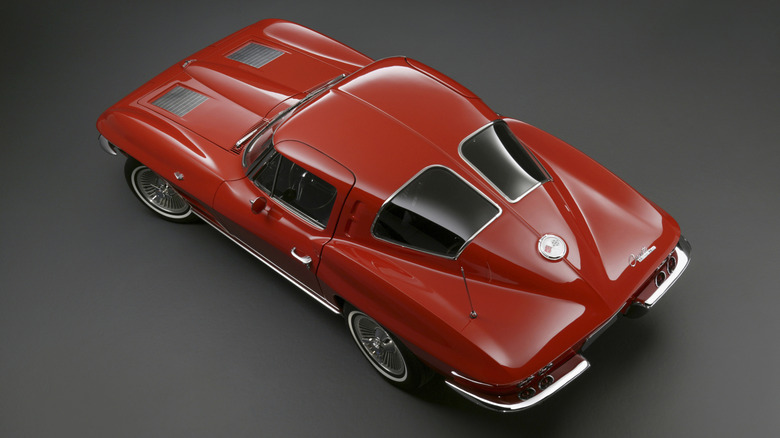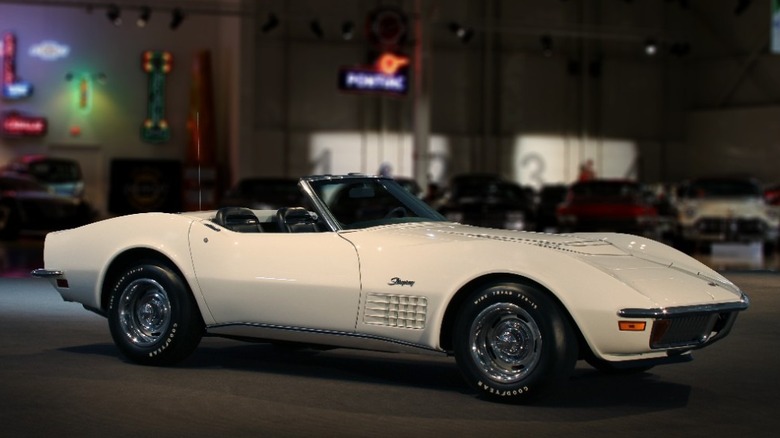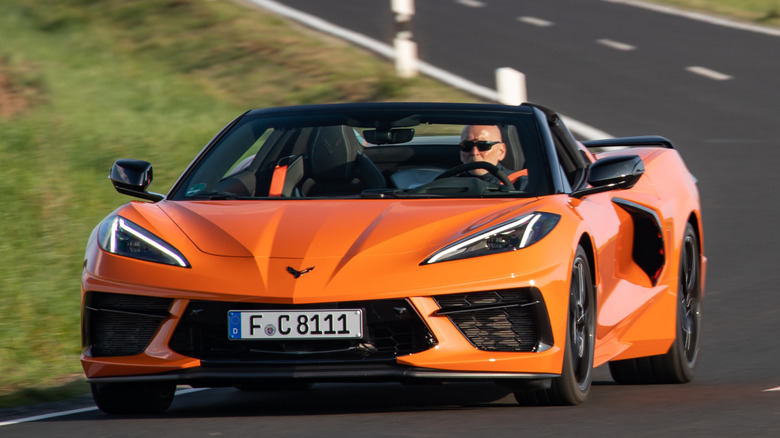What Makes A Corvette A Stingray?
The production history of the Corvette Stingray goes back to the 1963 debut of the first Corvette Sting Ray (originally expressed as two words). This car, available as both a coupe and a convertible, represented the second generation (C2) of the Corvette.
The extremely distinctive 1963 Corvette Sting Ray split-window coupe, created by legendary GM designer Bill Mitchell, was actually inspired by the aquatic stingray that moved so easily through its native habitat. The split-window coupe featured a "spine" along the entire roof, meant to suggest the stingray's tail.
This unique styling feature met with disapproval from Sting Ray drivers, who did not appreciate having their rear vision blocked. A change was made and a one-piece window replaced the split one for the 1964 model year, as well as rest of the model's run through 1967.
Since then, the 1963 Sting Ray split-window coupe's rarity has elevated its value far above its solid-window siblings. But regardless of its window type or body style, every second-generation Corvette was a Sting Ray.
Something strange happened with the Corvette Sting Ray between 1968 and 1969
Something odd happened in 1968, which was the first year of the third-generation (C3) Corvette. The new car was named the Sting Ray, just as the second-gen 'Vette had been identified. But while it was identified as a Sting Ray in the sales brochures, the 1968 model was not given any Sting Ray badges. This changed in 1969, its second year on the market, when it was renamed the Corvette Stingray (one word), with new badging to match.
So, after one year as a Sting Ray and then becoming a Stingray the next year, the third-generation Corvette continued as a Stingray through model year 1976. For the 1977 model year, the Stingray name disappeared from both the Corvette brochures and the Corvette's fenders. Even though the third-generation Corvette remained in production through the 1982 model year, there would be no more Corvette Stingrays produced during the rest of the 20th Century.
The Corvette Stingray makes a 21st Century reappearance
The model year 2014 represented the reveal of the seventh generation Corvette (C7), which was once again given the Stingray name. One major difference was that the Stingray name now denoted the base-level cars, while the higher-performance models such as the Z06, Grand Sport, and ZR1 dropped the Stingray name. The seventh-gen Corvette Stingray, the last to have its engine in the front, was produced through 2019, then replaced in 2020 by the eighth-generation Corvette, the mid-engine C8.
The 2020 C8 Corvette Stingray was the first C8 model to be released. In 2023, the Corvette Z06 appeared, showing that the C7's naming system would continue – the Corvette Stingray would remain as the base car. This convention continued with the 2024 debut of the hybrid Corvette E-Ray and the upcoming 2025 debut of the 1,064-horsepower Corvette ZR1, the most powerful street 'Vette built to date. The Corvette Stingray is the foundational sports car that the impressive Corvette lineup has been built on.


